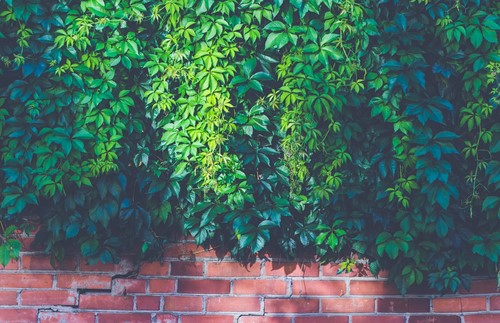
Many of us have heard of a living or green wall. They’re excellent choices for reducing bills, counterbalancing emissions from basic home living and adding a beautiful touch of nature to your home’s exterior. But what are some of their other perks? Are there other external living features that can be applied to a home to further reduce your monthly utility bills?
Here are three external living features that will do just that, starting with the living wall.
Living walls are walls that have some sort of greenery attached to them. A common variety includes vines or ivy being gently guided along the siding of the home with a green facade or vertical trellis. Others include having the plant directly embedded into the structure of the siding or exterior panel.
Living walls are excellent at reducing noise from neighboring homes, other residents within the community or general life sounds. Other facets of living walls include temperature equalizing, which reduces the strain on your heating and cooling system. Since it isn’t working as often or as hard, living walls can also help you reduce your utility bills.
They’re also marvels at reducing fade damage from the sun or eventual erosion from rain, since the plants living on them require both to stay nourished.
Like living walls, living roofs are great for maintaining your roof. The plants keep the sun and harsh rain from damaging the exterior shingles or layering. However, living roofs offer another benefit: insulation. Living roofs help insulate the uppermost area of the home, the area that holds most of the heat during the warmer months. If you have central air, your system may work twice as hard with a conventional roof, even with proper attic insulation, than with a living one.
When working with proper upcycled or eco-friendly, insulating material, living roofs offer an outer layer or barrier of insulation. The outer insulation helps the inner insulation in the home keep up with the demands of the surrounding environment and further reduces the strain on in-home systems.
Living floors are typically alternatives to grass. Some grass species are invasive, while others can do tremendous amounts of harm to the soil, especially if not cared for. Living floors, like clovers or moss, may not provide the same type of savings, but they will do wonders for your lawn maintenance needs. For example, clovers and moss do not need excessive mowing and can be grown relatively easily with few resources, which will lower your water bill and the bill for new equipment like mowers or extensive weed whackers.
Living exterior features can improve your home’s value if your target demographic is among the emerging, eco-friendly group. With more homeowners looking for ways to save money while staying green, there’s no wonder why so many of these living exterior features are showing up on the market for a wide-range of homeowners with a wide range of budgets.

Kim Clark started her real estate career in 1999 and shortly thereafter obtained her Broker’s license in 2002. After working for larger, corporate offices, she realized that her business and clients needed a more personalized and flexible firm. She founded Bayside Realty Consultants in 2007 offering a space of unity, collaboration and encouragement for agents and their clients. Kim specializes in the unique Cape Cod market comprised of primary, vacation and investment properties.
She says "It is great to be a part of helping make a homeowner's dreams come true". Clients and their individual needs can make things very exciting! Kimberly's enthusiasm is contagious and it has been a real asset in her successful career. She says, "Never quit. Just do what you like and the rest just falls into place." She is certified in several real estate designations including GRI, CBR, CRS, e-Certified, and a certified trainer.